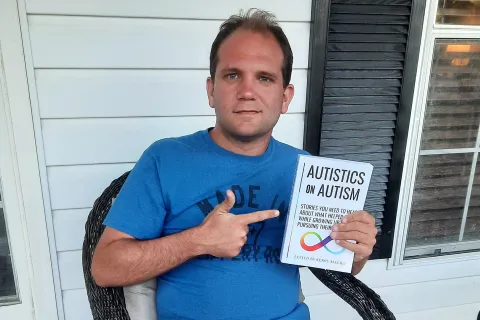Parents of child with autism seek help with public meltdowns
“You recently posted two blogs on managing recurrent behavioral crises. This isn’t a chronic problem for us. But there are times when our son has public meltdowns. Can you offer some effective strategies for handling the situation?”
This week’s “Got Questions?” answer is by child psychologist Lauren Elder, Autism Speaks assistant director for dissemination science. For the blogs referenced in the above question, see "Help for Child with Recurring Behavioral Crisis" Part 1 and "Help for Child with Recurring Behavioral Crisis" Part 2.
A behavioral crisis is difficult anywhere. It can be particularly challenging to handle in public. While many of the tips in the previous blogs still apply, here are some additional suggestions tailored for those public meltdowns.
Clearly, the best strategy is prevention. A child is more likely to have good behavior if he or she clearly understands what’s expected.
Preparing for public outings
For children with autism, social stories and visual cues can be particularly helpful in conveying your expectations. You can tailor your social story to the kinds of public situations you and your child often encounter. For example, it might be the story of a child going to the grocery store with his mother and not liking all the noise. He feels like screaming, but instead he asks his mother for help. She gives him a tight hug to help him calm down, tells him they’ll be done in 5 minutes and offers him a pair of ear protectors.
You can also use visual supports to tell the story and otherwise convey your expectations. For example, you can have a card your child hands you when he or she is feeling overwhelmed and needs a break. You can have a set of pictures that illustrate each step of an outing to help your child understand what to expect. You can use “first-then” pictures – for instance, a picture of your child sitting quietly at a restaurant, followed by a picture of the reward you’ve promised for good behavior. (Also see Autism Speaks ATN/AIR-P Visual Supports Tool Kit.)
Practice. Role-play going to a store, library, restaurant or wherever you plan to take your son. Have him practice good behavior during the role-play. Practice potential problems too. Such rehearsals can help your child tolerate waiting in a long line or finding out that a store is out of his favorite treat.
Start small. It’s best to start small when you go on a new outing or return to one after a long break. So on your child’s first trip to a restaurant, have just an appetizer, dessert or drink, then leave. On the first trip back to the grocery store in a long time, buy one item and head home. Gradually increase your child’s time in public as his behavior suggests he’s ready. Remember, success encourages success.
Involve your child. Invite your child to actively participate in the public activity. For instance, ask him help put groceries in the cart. Allow him to pick out a book at the library.
Have distractions ready. For any child, a small toy or game can help make the inevitable waits more tolerable.
Teach your child coping strategies. It’s good to have several options for calming your child. You know what works best. One strategy would be to prompt him to take deep breaths. Another is to have him close his eyes and count to 10 or think about his favorite place. Other strategies could include having a favorite stuffed animal on hand or a favorite song to sing quietly. It’s important to practice these coping techniques when he’s calm so he’s comfortable trying them when stressed.
Reward good behavior. In addition to clear expectations, provide a clear reward for good behavior. For example, let your child know that if he has quiet hands and a quiet voice at the grocery store, he gets 15 minutes of a favorite activity when he gets home. The positive anticipation can help motivate him.
Handling the public crisis
Planning can help reduce public meltdowns. But it probably won’t prevent them all. Here’s my advice on how to handle a behavioral crisis in a public place:
Stay calm. Take deep breaths and a minute to assess the situation.
Stop and help your child. If at all possible, stop what you were doing and focus on helping your child calm down. Use his coping techniques and/or try a distraction.
Tell bystanders what you need them to do. If needed, say something like, “My son has autism. Please step back. Space helps him calm down.” Some parents carry business cards that explain autism and their child’s behavior. You can simply hand the card to a bystander to signal your need. Most people want to help once they understand what’s happening. So don’t be afraid to ask someone to fetch the store manager for assistance or ask bystanders to help move dangerous objects out of the way. In an extreme situation, you may need to ask someone to call 911. No one likes this option. But remember that your first priority is ensuring safety for your child and those around him.
If public behavioral crises continue to be a problem, I urge you to consult a behavioral therapist who can customize a plan to improve your child’s behavior. You also may want to consult the Autism Speaks Challenging Behaviors Tool Kit and "Help for Child with Recurring Behavioral Crisis" Part 1 and "Help for Child with Recurring Behavioral Crisis" Part 2.









